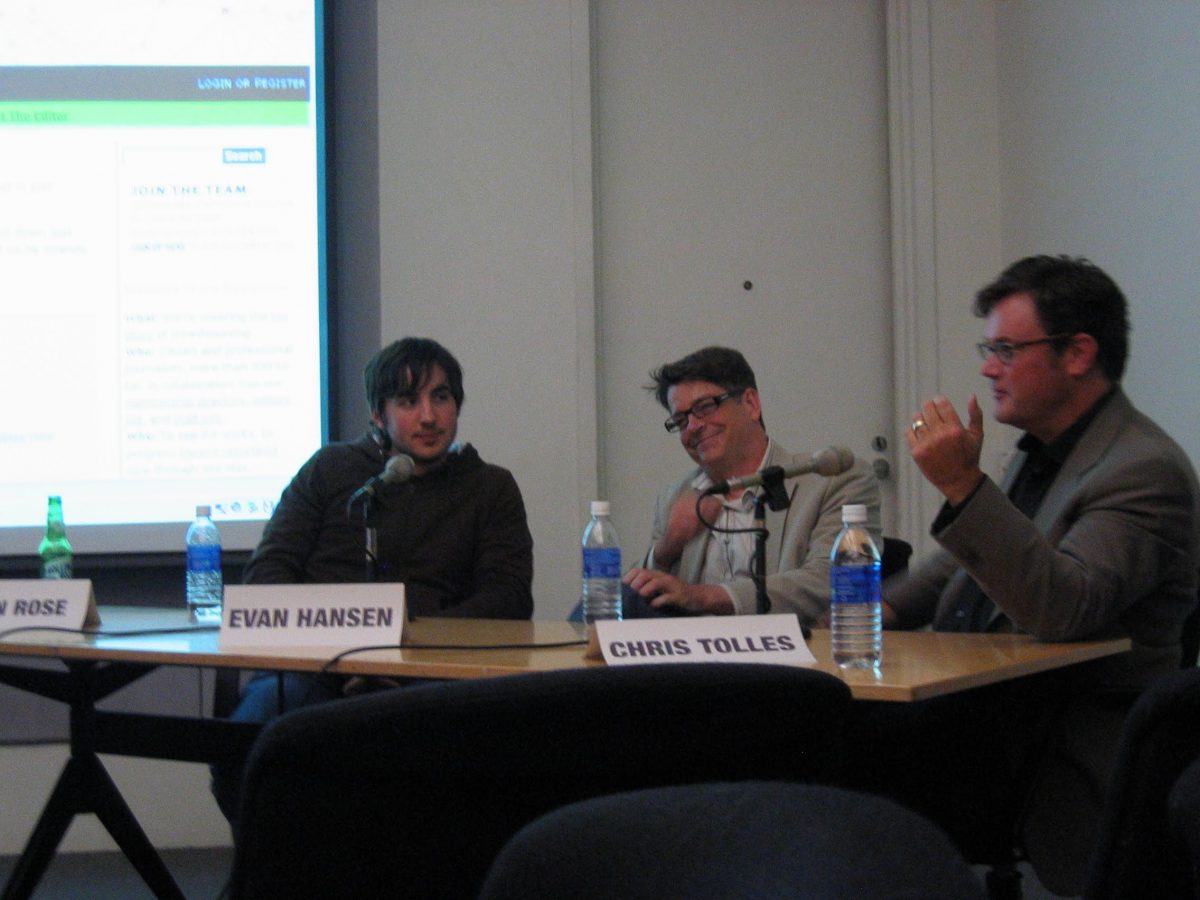The Social Media Club gathered at the KQED studios in San Francisco to discuss “social news aggregators.” It was a panel discussion so unfortunately there was not a lot of time for interaction with the audience but with Digg, Reddit, and Topix represented on the panel, there was plenty to learn. Pictured above, the panel included:
From my notes,
Story to Comment Ratio. In response to a question from Daniela. Out of about 40k stories/day Digg figures they get about 8k comments. The story/comment ratio is an important metric for measuring the health of a community but we need to keep in mind that Digg stories are usually not much more than a line or two summary of what they’re pointing to.
Copyright. For mainstream media, copyright often extends to headlines. Topix had to negotiate the right to republish headlines. Wired re-writes them. The Digg users often re-write Wired News headlines. Evan complimented the Digg community for sometimes coming up with better headlines than their own.
Where’s the Story? – In response to a comment from Tom Foremski Evan said that professional newspaper journalists have been sitting in a happy medium between the trade journals and the public. The trade journalists are doing all the heavy lifting, staying close to their sources and sniffing out the stories because of their deep understanding of the industry. Once the trades publish a story, the mainstream journalists would pretty up a technical article, make a few calls to verify facts, and publish it for the mainstream audience.
This game is now being played on the general news organizations. Online aggregators are picking up the general news and re-purposing it for their audiences. The social tools that overlay the aggregated news feed is a “crowdsourced” version of the newsroom.
Traffic Sources: Evan mentioned that 90% of their traffic comes via the sidedoor (RSS feeds, clicks from aggregators such as Digg). Yet, even with just 10% of the traffic, it is important for them to spend time on their front door because that represents their brand.
Advertising: Chris had a great observation on the shift to online and what that means for existing business models of the large media companies. A member of the audience mentioned that large media companies are resisting the shift to online because they have a large infrastructure and revenue stream to protect. To this, Chris further added that as the management of these companies look at their net yield/user, it’s a fraction of what they would make from them via advertising on the traditional print or broadcast video channels.
As readers come online and shut off their TVs or cancel their newspaper subscriptions, it’s not like the receivers of the attention are gaining the same amount of revenue that the large media company has just lost. It’s not zero-sum, value is being lost and will be captured elsewhere. Advertising models are going to have to change, it’s not about net impressions, it’s going to be something else. We’re currently stuck in a new world with measurement tools based on the old business model. Until that gets changed and we learn to measure and value something like engagement, it will always appear as if value is being “destroyed.”

Leave a Reply to Tom ForemskiCancel reply